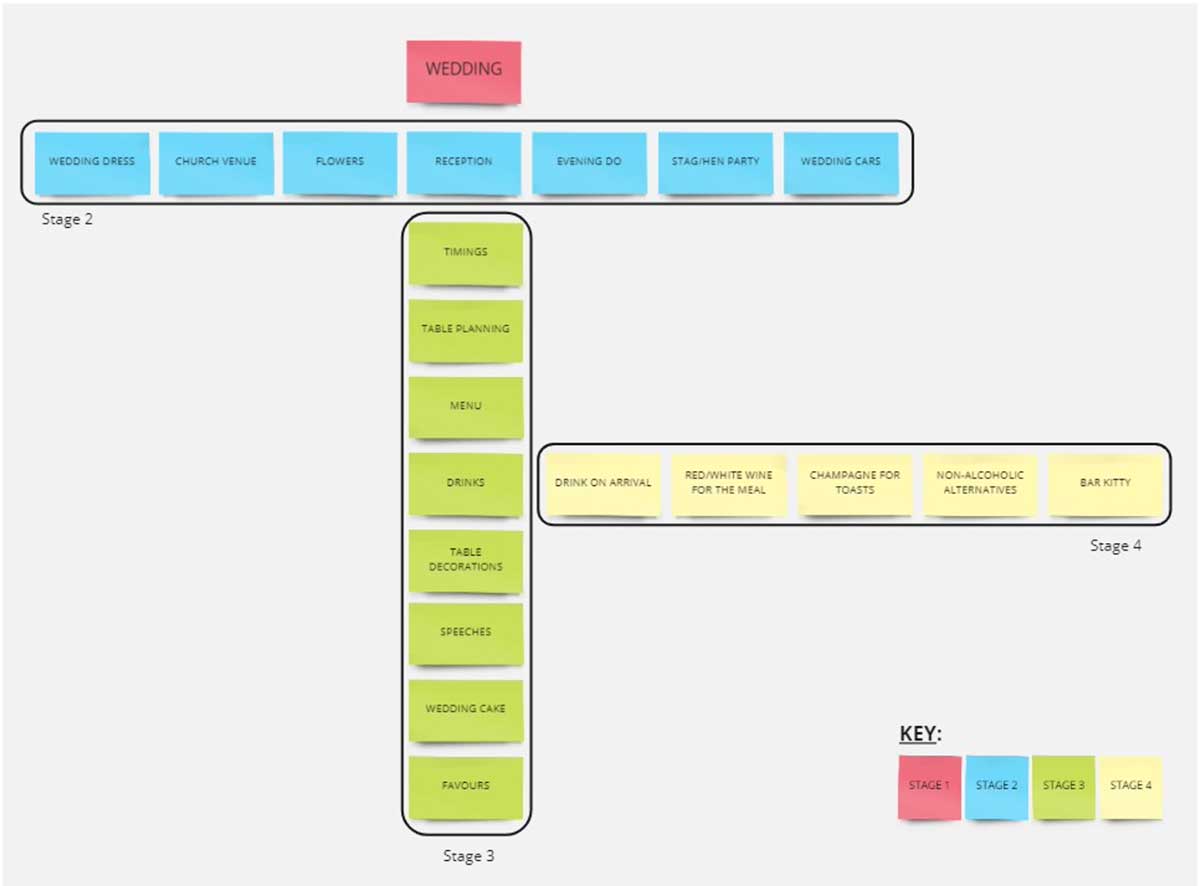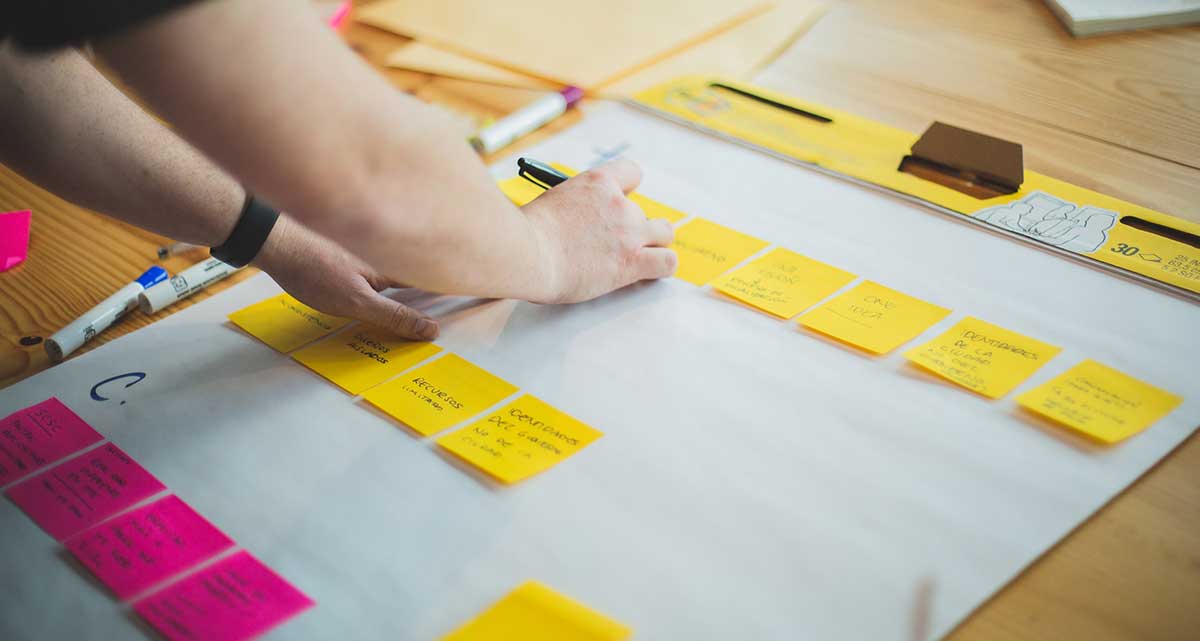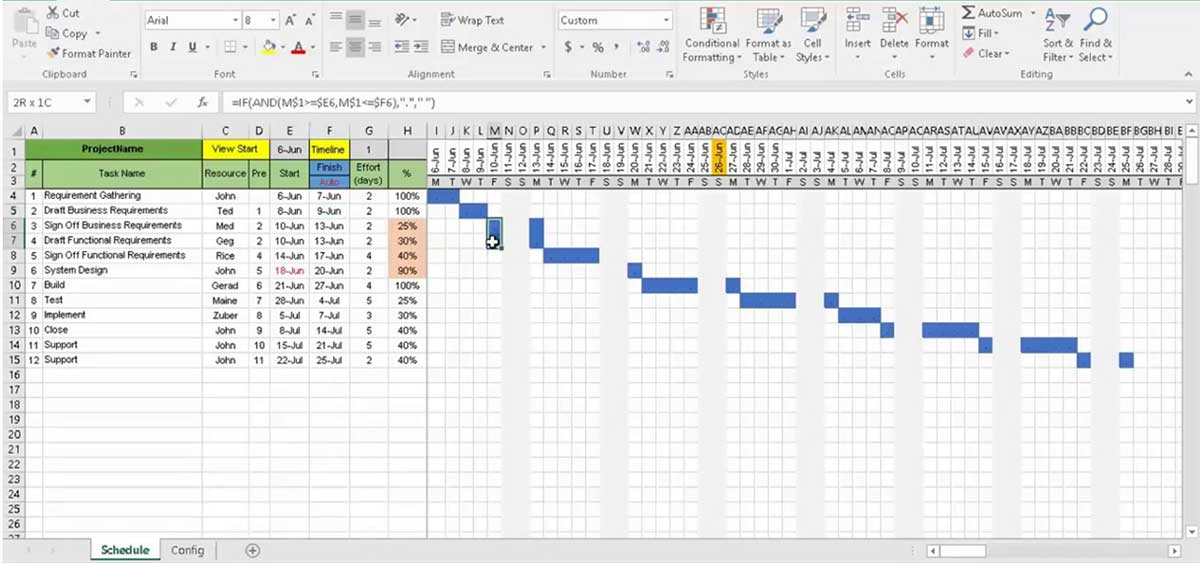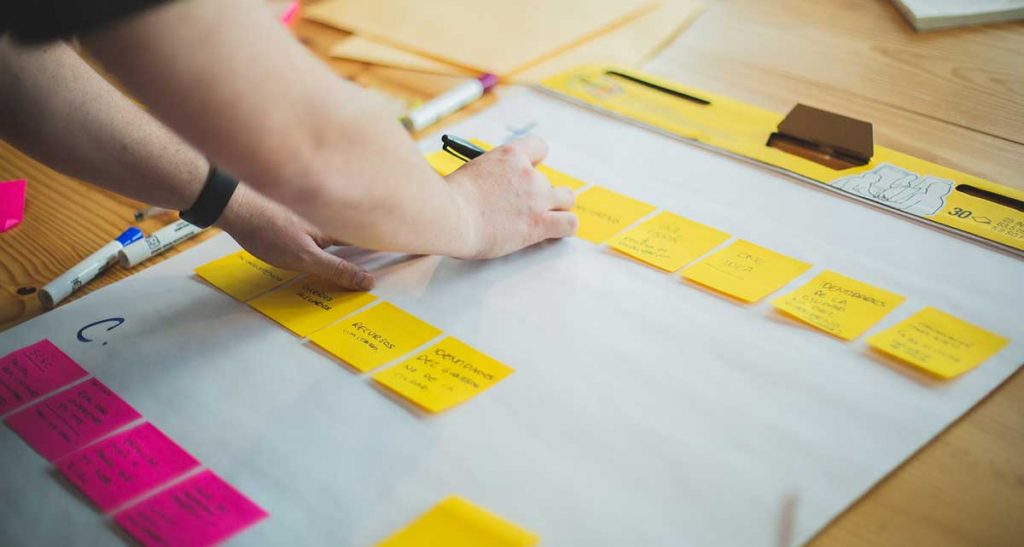“Failure to plan, is planning to fail”
Alan Lakein
One of the key aspects of any project is having a plan. There are many different techniques of coming up with a plan, but for those of you who are not sure where to start, producing a Work Breakdown Structure might be the answer.
A Work Breakdown Structure is a simple process of breaking down your project into its component parts. It helps you work out all the things you need to deliver without getting overwhelmed. Let us see how it works by using an everyday example.
First & Second Stage:
Let us imagine you have to plan a wedding. There is a lot to think about….
There is the dress, the venue, the cars, the flowers, the reception and the evening do, not to mention the hen and stag parties, and most importantly, the honeymoon! All these things are the second stage of your Work Breakdown Structure, and we ensure they are all written down.

The 100% Rule:
For your project to be successful, we need to apply the 100% rule. This rule states that all the items in each level of your Work Breakdown Structure must represent 100% of the work required to deliver the item in the level above. Nothing can be omitted.
In applying the rule, we realise we have missed the wedding photographs, so we add that in.
Third & Fourth Stages:
Now, we repeat the same process for each activity in the second stage, breaking each item down to its component parts.
For example, let us look at the Meal. This includes Timings; Table Planning; Menu Selection; Drinks; Table Decorations; Speeches, Cake etc.
Write each one down, apply the 100% rule, and move to the next activity.
Detail
So how far do you go? As with all things, there must be a level of common sense. Small projects can probably be done within three or four stages, whereas larger, more complex projects may need further stages to complete.
There is a simple rule of thumb which can be applied and that is to continue with developing your Work Breakdown Structure until you reach your first activity or action! For example, “booking the venue”.
Be Creative
For projects involving several people or teams, you can use this technique in a group exercise or planning workshop. Write your tasks onto individual post-it notes and organise them on a wall or a large roll of paper.


When you have finished, be sure to capture your efforts by photographing the arrangement or rolling up the paper and taking them with you.
Creating the plan
You can now use the stages of work breakdown structure to set out your project, sub activities and tasks using your preferred method and template. Once written down, you can construct the detailed plan by allocating resources, identifying the start and end date for each task and work out the sequencing to build up a picture of your delivery plan.


Review
In this short topic we have covered
- What is a Work Breakdown Structure.
- How it can help us to identify the component parts of our project.
- How we work through the stages.
- And when to stop.
Hopefully this taster has given you an insight into how to apply this really useful tool to help you plan your project.

